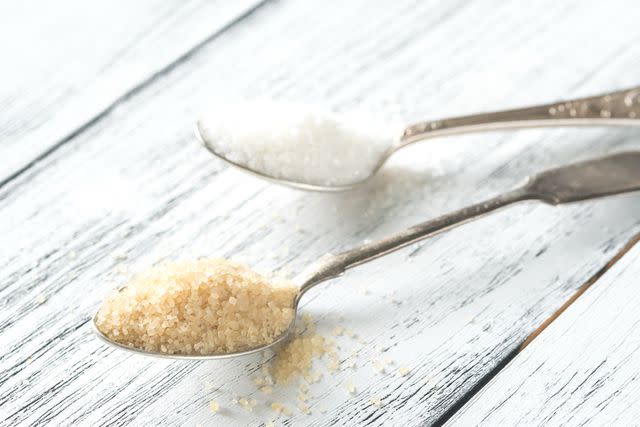The Difference Between Cane Sugar and Granulated Sugar, According to Bakers
Everything you need to know about the differences between cane sugar and granulated sugar and when to use each.
:max_bytes(150000):strip_icc():format(jpeg)/ms-sugar-getty-cfed0662acca49f7b6e52c593767dfb9.jpg)
BURCU ATALAY TANKUT
It's an essential baking ingredient, so of course you keep your pantry stocked with sugar. Still, if you're anything like us, you may often be on autopilot when you grab a bag of sugar at the store. Then, when you are reading a recipe you're just about to make, you notice: Some recipes call for cane sugar, some specify granulated. Which did you buy? Or are they the same? Spoiler alert, while both these types of sugar are used for baking, there is a distinct difference between them.
Meet Our Expert
Melanie Wanders, research and development specialist, King Arthur Baking Company
Ashley Jonique, private chef, who grew up harvesting sugarcane with her family in the New Orleans area
Susan Palmer, owner of Little Red Kitchen Bake Shop in Brooklyn, New York
Related: How to Replace Sugar With Honey, Maple Syrup, and Other Unrefined Sweeteners in Baking
What Is Cane Sugar?
Cane sugar is a minimally processed sugar made from sugarcane.
"Because of the minimal processing, it retains bitter, burnt, vegetal, and fruity notes that add depth to baked goods," says Melanie Wanders, a research and development specialist at King Arthur Baking Company's Test Kitchen. Molasses is a product of the refining process—since cane sugar is less processed than granulated sugar, subtle molasses flavors are retained.
Cane sugar is often off-white to tan in color—significantly darker than granulated sugar. Depending on the brand, the crystals in cane sugar will likely be larger than granulated sugar, although some are just as fine.
When to Use Cane Sugar
As cane sugar often has larger sugar crystals and is less neutral in flavor than granulated sugar, it can affect the texture and flavor of recipes. That's not to say it isn't suitable for baking: Susan Palmer, owner of Brooklyn-based Little Red Kitchen Bake Shop, says her bakery exclusively uses cane sugar.
"I prefer cane sugar for baking my desserts, especially pralines, because the molasses is naturally there for sweet treats," says chef Ashley Jonique, who grew up harvesting sugarcane with her family in the New Orleans area.
If you want a hint of that molasses flavor, opt for cane sugar. In addition to pralines, it tends to work well in cookie recipes.
But cane sugar won't work for every recipe. Wanders advises letting the recipe be your guide. "Do your best to use the specific sugar called for in the recipe for optimal results," she says.
Substituting Cane Sugar for Granulated
If you do want to experiment and are swapping cane sugar in a recipe that calls for granulated sugar, you can substitute it one-to-one.

AlexPro9500 / Getty Images
What Is Granulated Sugar?
Granulated sugar, sometimes called white sugar or simply sugar, is what most people think of when they hear the word sugar. It’s also what’s commonly called for in recipes. It is more refined than cane sugar and has a more neutral flavor.
"Derived from either sugarcane or sugar beets, this is the most commonly used sugar in baking, and for good reason,” Wanders says. “It's neutral in flavor and has medium-sized, uniform crystals that are small enough to dissolve into batters and large enough to create air pockets when creamed with butter.
When to Use Granulated Sugar
If you tend to stock your pantry with only one sugar, Wanders says it should be granulated sugar. That's because, in addition to most commonly appearing in recipes, its neutral flavor makes it ideal for cakes, cream fillings, and other delicate desserts.
Use granulated sugar for anything where you don't want the larger grains of cane sugar to come through, says Palmer. "I would also choose granulated sugar when making a French meringue as it would dissolve fully into the egg as you whip it to a stiff peak," says Palmer.
Also, use granulated sugar anywhere that color might come into play. When macerating fruit, Palmer suggests using granulated sugar because cane sugar would produce a golden color. And you may prefer the more neutral look of granulated sugar when coating fruit in sugar or making candied fruit peel. Lastly, cane sugar can produce a tan tinge in white confections, like all types of meringue, whipped cream, white cake, and angel food cake—opting for granulated sugar here will help ensure a snowy white hue rather than a golden one.
Read the original article on Martha Stewart.

